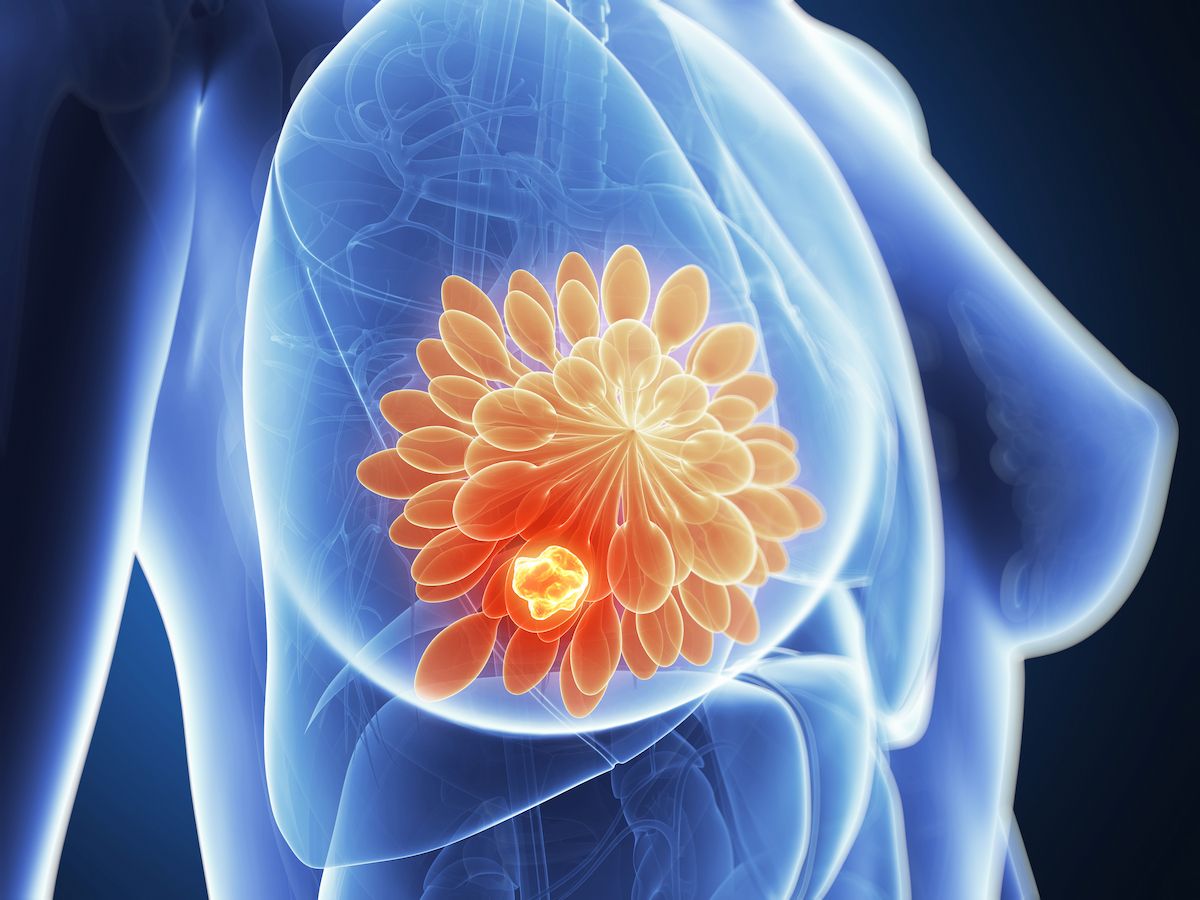Biosignature Test May Predict Residual Risk Post-BCS/RT in HER2+ DCIS
Use of DCISionRT may open new options for tailored treatments among patients with HER2-positive ductal carcinoma in situ.
Use of DCISionRT may open new options for tailored treatments among patients with HER2-positive ductal carcinoma in situ.

The 7-gene biosignature test DCISionRT may help identify a subset of patients with an increased risk of in-breast recurrence (IBR) following breast-conserving surgery (BCS) and radiotherapy for HER2-positive ductal carcinoma in situ (DCIS), according to findings from a study published in Clinical Breast Cancer.1
Of 178 patients who underwent treatment with BCS plus radiotherapy, the test identified 113 (63%) as having residual risk subtype (RRt) disease, 28 as having low-risk disease, and 37 as having elevated-risk disease. Overall, the total IBR risk was significantly higher for patients with RRt disease compared with all other subtypes (HR, 8.3; 95% CI, 1.1-50.0; P = .01). At 10 years, the IBR rates were 16.2% (95% CI, 9.7%-26.5%) in the RRt subgroup compared with 1.6% (95% CI, 0.2%-10.9%) for all other patients with HER2-positive disease.
Based on univariate analysis, factors such as tumor size (P = .16), grade (P = .42), or age (P = .09) did not significantly correlate with IBR. Per multivariate analysis, however, the RRt subtype uniquely correlated with IBR rate (HR, 7.9; 95% CI, 1.0-63.0; P = .05) when adjusting for size (P = .17), grade (P = .98), and age (P = .07), which did not have a significant association with IBR.
“The identification of this residual risk subtype opens new avenues for tailored treatments. It particularly highlights the possible benefit of trastuzumab [Herceptin] in this subset of patients, as we've been investigating in the NSABP-B43 trial [NCT00769379],” lead study author Frank Vicini, MD, a radiation oncologist of Michigan Healthcare Professionals, stated in a press release on these data.2 “These results could significantly impact how we approach treatment for [patients with] HER2-positive DCIS moving forward.”
Developers designed DCISionRT to provide a personalized recurrence risk and elucidate pathologic risk factors in patients with DCIS by combining molecular biology with risk-based assessment scores. The assay generates a Decision Score that may help identify low or elevated risks among patients. Compared with other tests, DCISionRT employs protein expression from 7 biomarkers and 4 clinicopathologic factors with a non-linear algorithm that adjusts for interactions across several individual factors to more accurately interpret complex biological information.
The study included patients with HER2-positive DCIS who received BCS plus radiotherapy and were selected from a combined international cohort. The primary end point was testing the hypothesis that patients identified as having the RRt subtype would experience a higher likelihood of IBR compared with those who do not have the RRt subtype. Investigators calculated IBR curves by using Kaplan-Meier analysis.
Regarding clinicopathologic factors in the RRt subtype group and non-RRt subtype group, investigators reported no significant differences in age or size. There was a comparable proportion of patients who were younger than 50 years and those who were 50 years or younger who were classified as having the RRt subtype (P = .15).
Data also showed similar rates of patients who had lesions of 1 cm or smaller or larger than 1 cm among those classified as having the RRt subtype (P = .44). Investigators reported that a higher proportion of those in the RRt subtype group had high nuclear grade compared with low or intermediate nuclear grade (P <.001).
“We're very encouraged by the latest publication. This study represents a significant opportunity to bring companion diagnostics and targeted treatment into the area of DCIS, marking a pivotal step in PreludeDx's commitment to advancing personalized medicine in breast cancer treatment,” Dan Forche, president and chief executive officer at PreludeDx, the developer of DCISionRT, concluded.2
References
- Vicini F, Shah C, Mittal K, et al. A 7-gene biosignature for ductal carcinoma in situ of the breast identifies subpopulations of HER2-positive patients with distinct recurrence rates after breast-conserving surgery and radiation therapy. Clinical Breast Cancer. Published September 4, 2024. doi:10.1016/j.clbc.2024.08.016
- PreludeDx announces groundbreaking study results on HER2-positive DCIS patients. News release. PreludeDx. October 2, 2024. Accessed October 2, 2024. https://tinyurl.com/43m545uw
Newsletter
Stay up to date on recent advances in the multidisciplinary approach to cancer.
Elevating the Quality of Cancer Care via Cross-Department Collaboration
Experts from Sibley Memorial Hospital discuss how multidisciplinary work has enhanced outcomes such as survival and resource use at their institution.